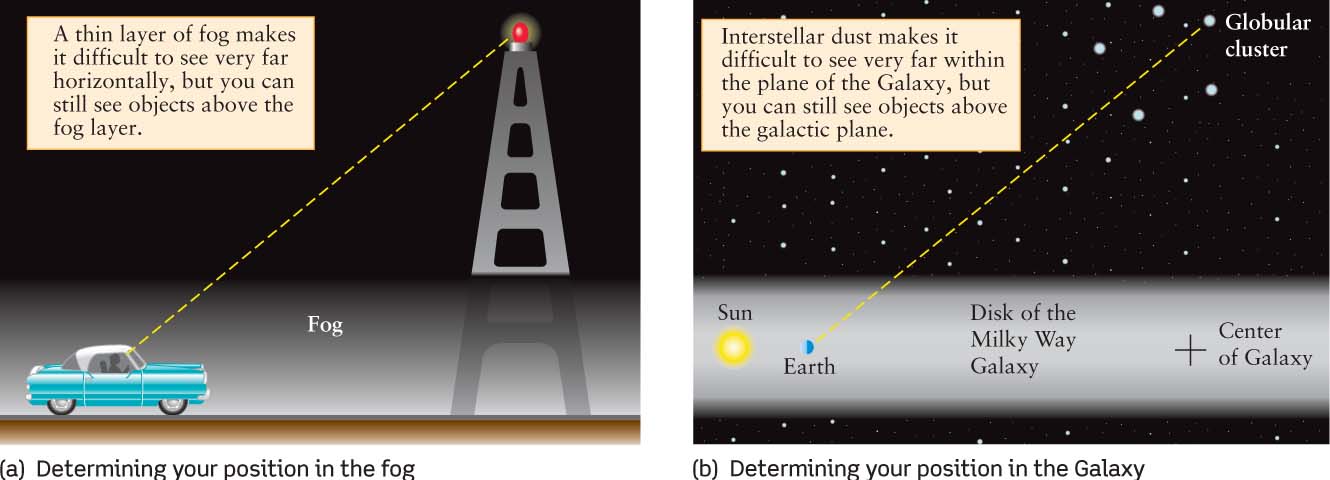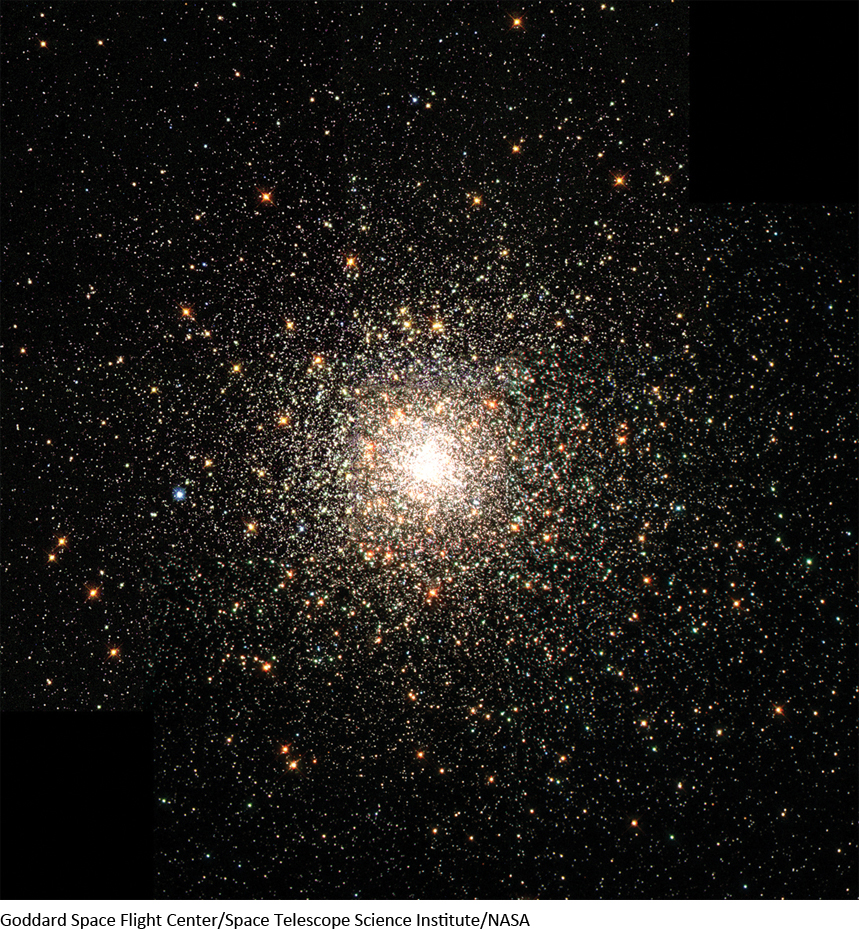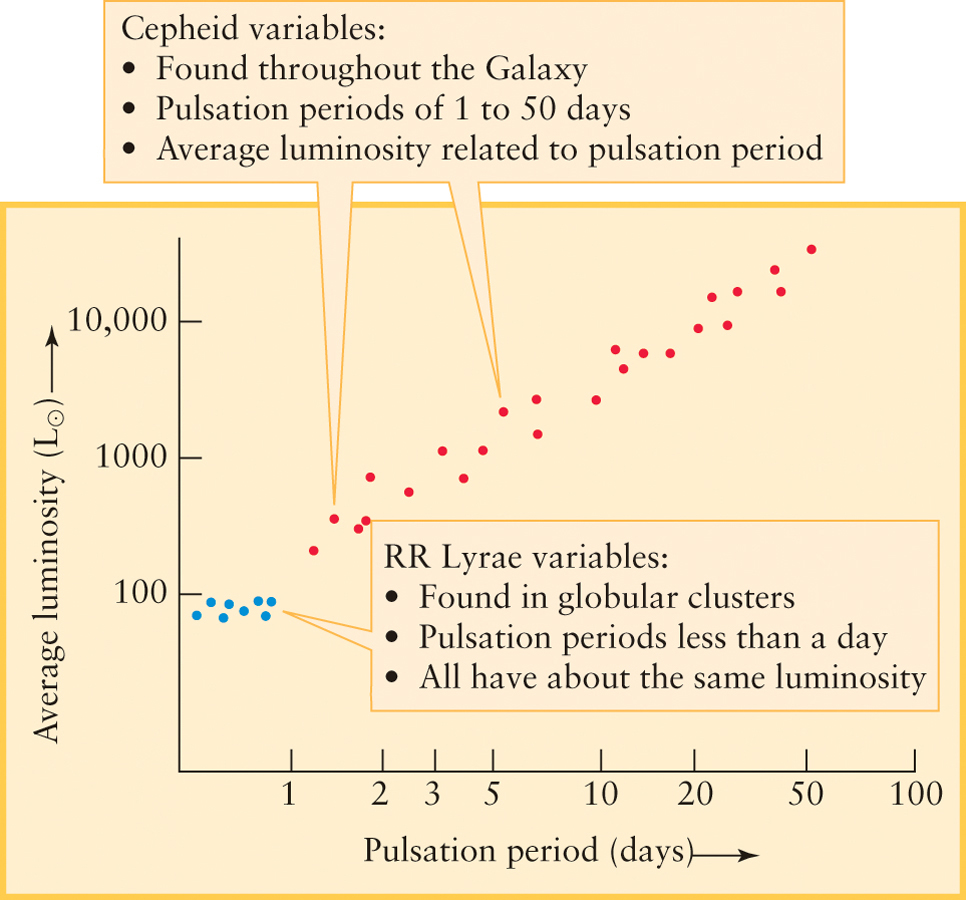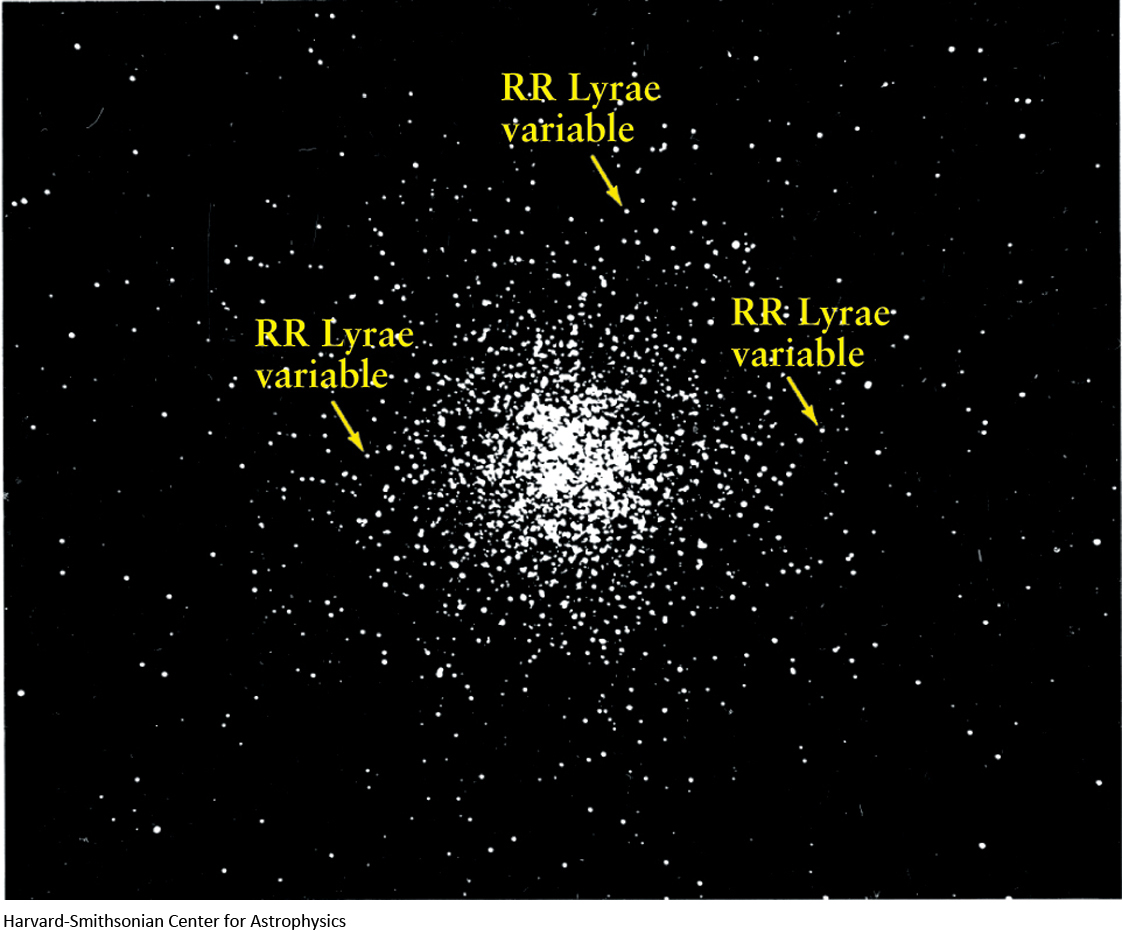13-1 The Sun is located in the disk of our Galaxy, about 25,000 light-years from the galactic center
Peering up into the night sky when it is very dark allows you to see the wispy band of light stretching across the sky, which we call the Milky Way. Running from horizon to horizon, the Milky Way is a stunning sight when seen far away from the city lights. As we will see, hundreds of millions of stars collect together in isolated clumps known as galaxies. Galaxies are wondrous collections of stars and interstellar matter, far larger than a star cluster. The vast spaces separating galaxies are largely empty.
Perhaps not surprising, the mysterious appearance of the Milky Way has long provided opportunities to share stories, sing songs, and create beautiful pieces of art. One story shared through the ages is an oft-told Cherokee folk-tale reminding us that a thief stealing cornmeal will always leave a trail behind, like the one scattered through the sky. Plains Indians often described the Milky Way as the pathway of the Wolf Star (Sirius) through the stars. The Māori of Polynesia respect the Milky Way as a canoe, a gift to remind paddlers of the origin and importance of the stars. Others have seen the Milky Way as a reminder to nurture the soul and the body: Greek mythology often refers to the Milky Way as a stream of the goddess Hera’s milk, once used to feed Heracles, the son of the god Zeus and the mortal Alcmene, while Roman mythology sometimes attributes this to the milk of Saturn’s wife, Opis. Egyptian mythology describes it as cow’s milk, emphasizing its importance in feeding the people of the land. Some Hindu stories describe this path through the sky as the Ganges River of the sky. Unquestionably, ancients looked at this same band, knowing it was somehow important and wondering what it might be.
Astronomers, too, have long wondered what the Milky Way could tell us about the nature and structure of the universe. Because the Milky Way completely encircles us, you might be tempted to think Earth and our Sun are located at the center. How could you determine if we are in the center of the Galaxy or off to one side? One strategy is to try to count stars to see if one side has more stars than the other, implying that we are off to one side. As it turns out, when one tries to count the visible stars along the Milky Way, as William Herschel, discoverer of the planet Uranus, described in 1785, it seems that there are a similar number on all sides of us, suggesting that Earth is indeed near the Milky Way’s center. But this initial observation is misleading.
Role of Obscuring Interstellar Dust
The reason this seemingly straightforward strategy of counting stars works was discerned in 1930 by Robert J. Trumpler of Lick Observatory. While studying star clusters, Trumpler discovered to his great surprise that the more remote clusters appear unusually dim—more so than would be expected from their distances alone. As a result, Trumpler concluded that interstellar space must not be as empty as everyone had assumed. It must contain dust that absorbs or scatters light from distant stars, causing them to appear dimmer than they otherwise would, so that they seem farther away or that there are even fewer stars than actually exist.
From our vantage point on Earth, we have an edge-on view, which is why the Milky Way appears as a band around the sky (shown in Figure 13-1a). As it turns out, hundreds of millions of stars collect together all over the universe in isolated clumps known as galaxies. As discussed in Chapter 1, astronomers define a galaxy as an immense collection of stars and interstellar matter, far larger than a star cluster. The vast spaces separating galaxies are largely empty (Figure 13-1b and c). Like the stars themselves, this interstellar dust is more concentrated in the disk of our Galaxy. As a result, it obscures our view, making distant objects appear dimmer than they really are, which fools us into thinking those stars are much farther away than they really are. Great patches of interstellar dust are clearly visible in wide-angle photographs such as the one opening this chapter. Because on first glance, we see only the nearest stars in the Galaxy, Herschel had no idea of either the enormous size of our Galaxy or of the vast number of stars concentrated around the galactic center, hidden from view by intervening dust.

303
ANALOGY
Herschel faced much the same dilemma as a lost motorist on a foggy night. Unable to see more than a city block in any direction, a motorist would have a hard time deciding what part of town he was in. If the fog layer were relatively shallow, however, our motorist would be able to see the lights from tall buildings that extend above the fog, and in that way he could determine his location (Figure 13-2a).

The same principle applies to our Galaxy. While interstellar dust in the plane of our Galaxy hides the sky covered by the Milky Way, we have an almost unobscured view out of the plane (that is, to either side of the Milky Way). To find our location in the Galaxy, we need to locate bright objects that are part of the Galaxy but lie outside its plane in unobscured regions of the sky.
304
Fortunately, bright objects of the sort we need do in fact exist. They are the globular clusters, a class of star clusters associated with the Galaxy but which lie outside its plane (Figure 13-2b). A typical globular cluster is a spherical distribution of roughly 106 stars packed in a volume only a few hundred ly across (Figure 13-3).

Globular Clusters Point to the Center of Our Galaxy
To use globular clusters to determine our location in the Galaxy, we must first determine the distances from Earth to these clusters. (Think again of our lost motorist—glimpsing the lights of a skyscraper through the fog may be useful to the motorist, but only if he can tell how far away the skyscraper is.) Pulsating variable stars in globular clusters provide the distances, giving astronomers the key to the dimensions of our Galaxy.
In 1912, the American astronomer Henrietta Leavitt reported her important discovery of the period-luminosity relation for Cepheid variables. Cepheid variables are pulsating stars that vary periodically in brightness (Figure 13-4). Leavitt found that the longer a Cepheid’s period, the greater its luminosity.

305
The period-luminosity law is an important tool in astronomy because it can be used to determine distances. For example, suppose you find a Cepheid variable in the sky. By measuring its period and using a graph like Figure 13-5, you can determine the star’s average luminosity. Knowing the star’s average luminosity, you can find out how far away the star must be in order to give the observed brightness.

Shortly after Leavitt’s discovery of the period-luminosity law, Harlow Shapley, a young astronomer at the Mount Wilson Observatory in California, began studying a family of pulsating stars closely related to Cepheid variables called RR Lyrae variables. The light curve of an RR Lyrae variable is similar to that of a Cepheid, but RR Lyrae variables have shorter pulsation periods and lower peak luminosities (see Figure 13-5).
The tremendous importance of RR Lyrae variables is that they are commonly found in globular clusters around the outskirts of galaxies, as mentioned earlier (Figure 13-6). By using the period-luminosity relationship for these stars, Shapley was able to determine the distances to the 93 globular clusters then known. He found that some of them were more than 100,000 ly from Earth. The large values of these distances immediately suggested that the Galaxy was much larger than Herschel had thought.

Another striking property of globular clusters is how they are unevenly distributed across the sky. Whereas ordinary stars are rather uniformly spread along the Milky Way, the majority of the 93 globular clusters that Shapley studied are instead located in only one-half of the sky. Most of the globular clusters seem to be clustered around the portion of the Milky Way centered in the general direction of the constellation Sagittarius.
From the directions to the globular clusters and their distances from us, Shapley mapped out the three-dimensional distribution of these clusters in space. In 1920 he concluded that the globular clusters form a huge spherical distribution centered not on Earth but rather about a point in the Milky Way several tens of thousands of light-years away in the direction of Sagittarius (see Figure 13-1a). This point, reasoned Shapley, must coincide with the center of our Galaxy, because of gravitational forces between the disk of the Galaxy and the “halo” of globular clusters. Therefore, by locating the center of the distribution of globular clusters, Shapley was in effect measuring the location of the galactic center.
Because globular clusters are distributed around the galactic core, finding their positions shows the direction toward the center of our Galaxy.
Since Shapley’s pioneering observations, many astronomers have measured the distance to the center of our Galaxy. Shapley’s estimate of this distance was too large by about a factor of 2 because he did not take into account that starlight dims when passing through intervening interstellar dust, which was not well understood at the time. Today, the generally accepted distance to the galactic nucleus is a little more than 25,000 ly. In other words, it would take sunlight about 25,000 years to travel from our Sun to the galactic center. Just as Copernicus and Galileo showed that Earth was not at the center of the solar system, Shapley and his successors showed that the solar system lies nowhere near the center of the Galaxy. Although a great place to live, it seems that Earth itself seems to occupy no particularly special location in the universe.
Question
ConceptCheck 13-1: If astronomers observed that globular clusters were evenly spread across all parts of the sky, what would astronomers assume about the location of our Sun and Earth in our Galaxy?
306